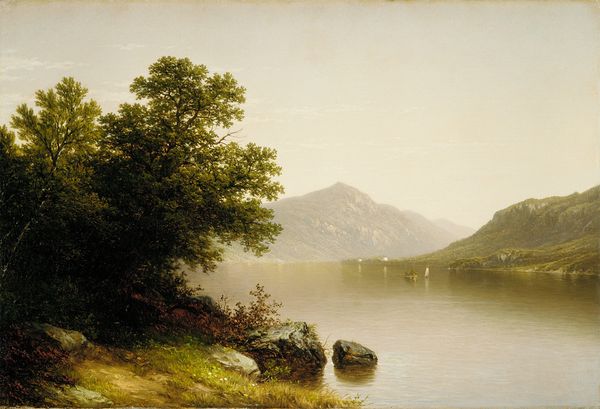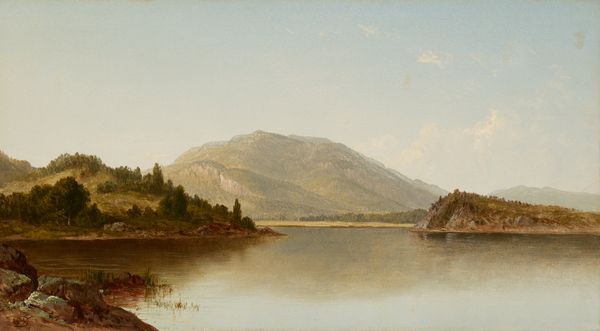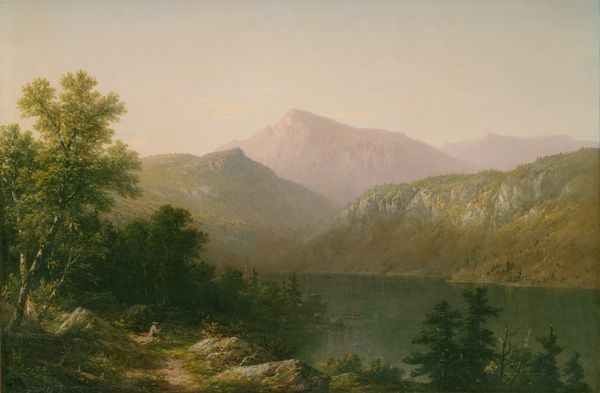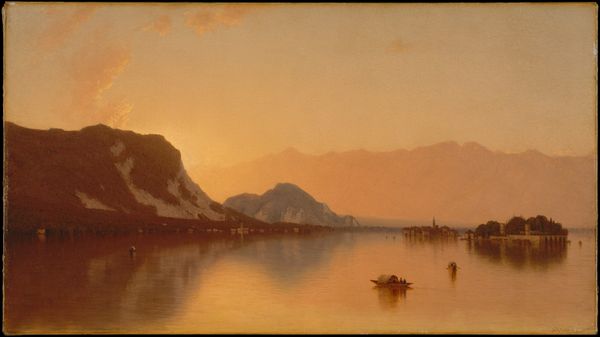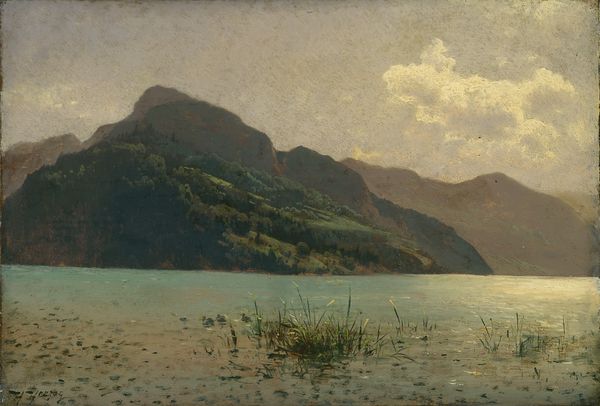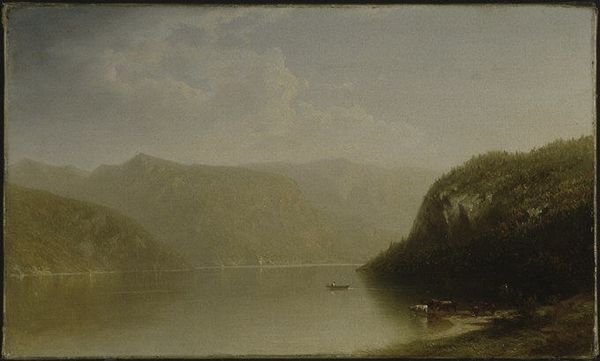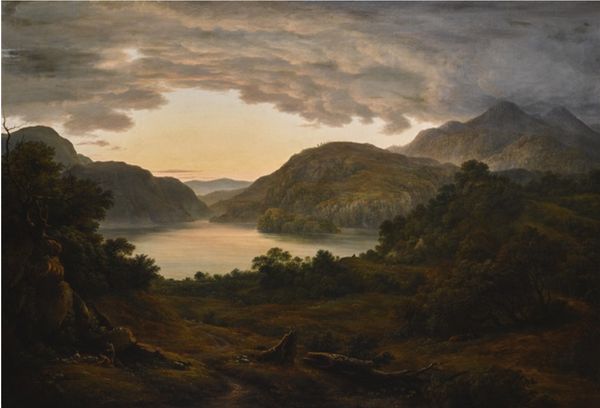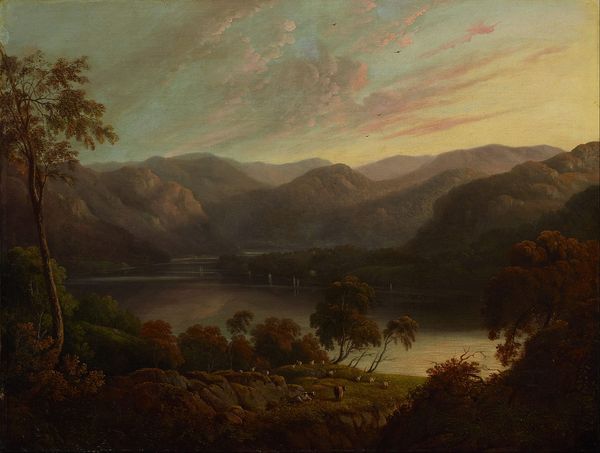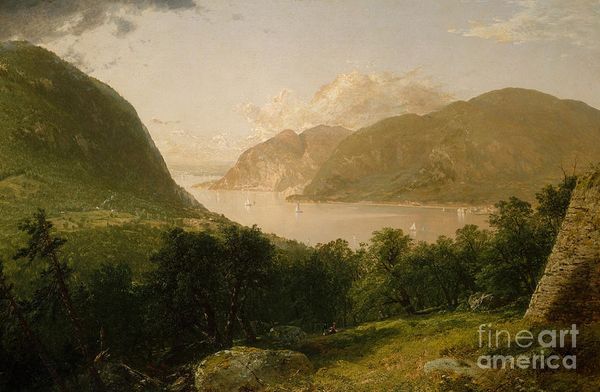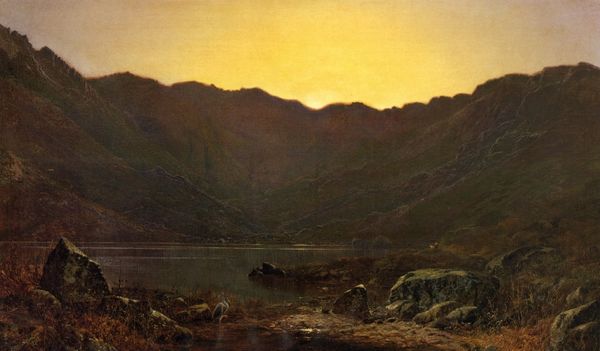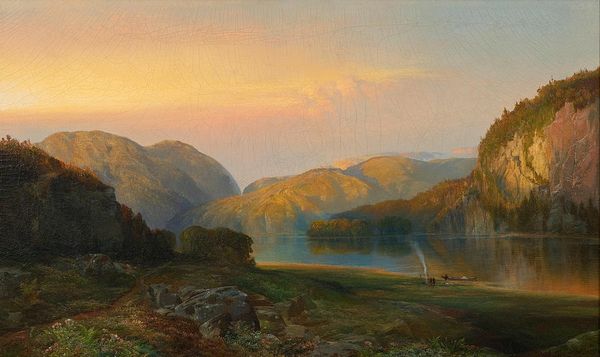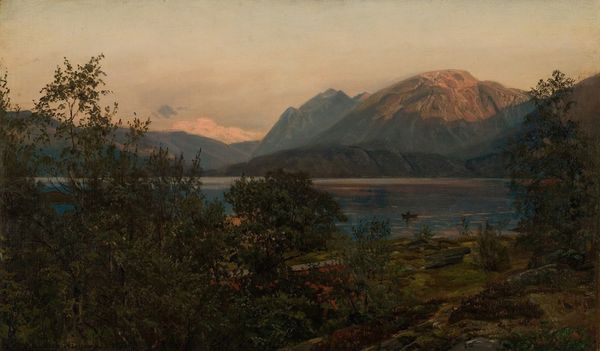
painting, oil-paint
#
lake
#
painting
#
oil-paint
#
landscape
#
luminism
#
nature
#
hudson-river-school
#
cityscape
#
nature
#
realism
Dimensions: 44 1/8 x 66 3/8 in. (112.1 x 168.6 cm)
Copyright: Public Domain
John Frederick Kensett’s *Lake George* is an oil painting, a medium intimately tied to the rise of industrial capitalism. The production of oil paint involved the extraction of raw materials, complex manufacturing processes, and a global trade network. Looking closely, you can see how Kensett built up the image with thin layers of paint, a technique called glazing. This painstaking process allowed him to achieve a remarkable luminosity and atmospheric depth, capturing the subtle gradations of light on the water and the distant mountains. His brushwork is so meticulous that it almost disappears, creating a seamless illusion of reality. But this very smoothness also speaks to the social context of the work. Kensett was part of the Hudson River School, a group of artists who celebrated the American landscape as a symbol of national identity and economic progress. Their paintings were often commissioned by wealthy patrons, who saw them as a way to assert their own cultural refinement and connection to the land. So, next time you look at a landscape painting, think about the materials and processes that went into it. By understanding how these works were made, and for whom, we can gain a deeper appreciation of their cultural significance.
Comments
No comments
Be the first to comment and join the conversation on the ultimate creative platform.
